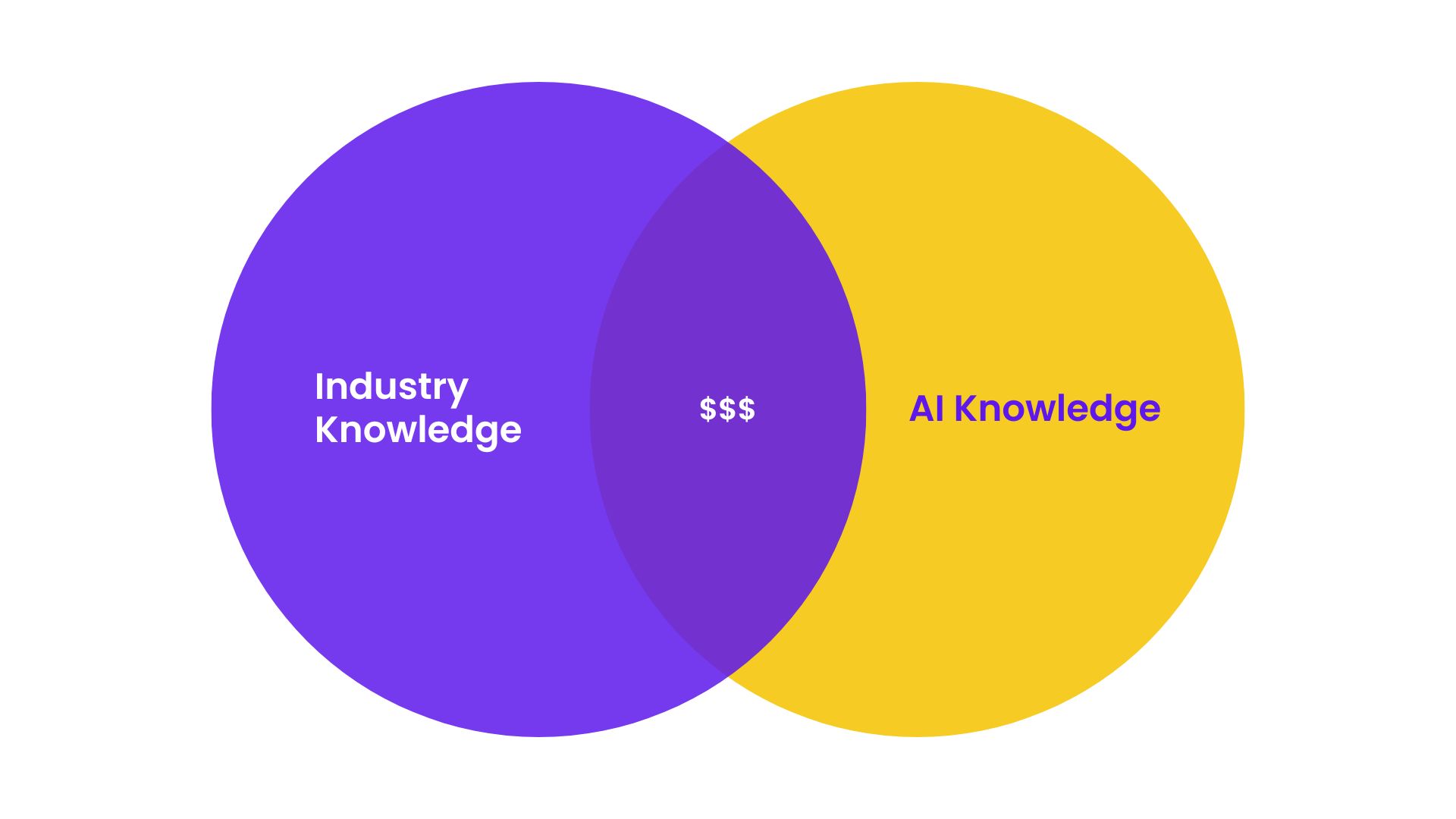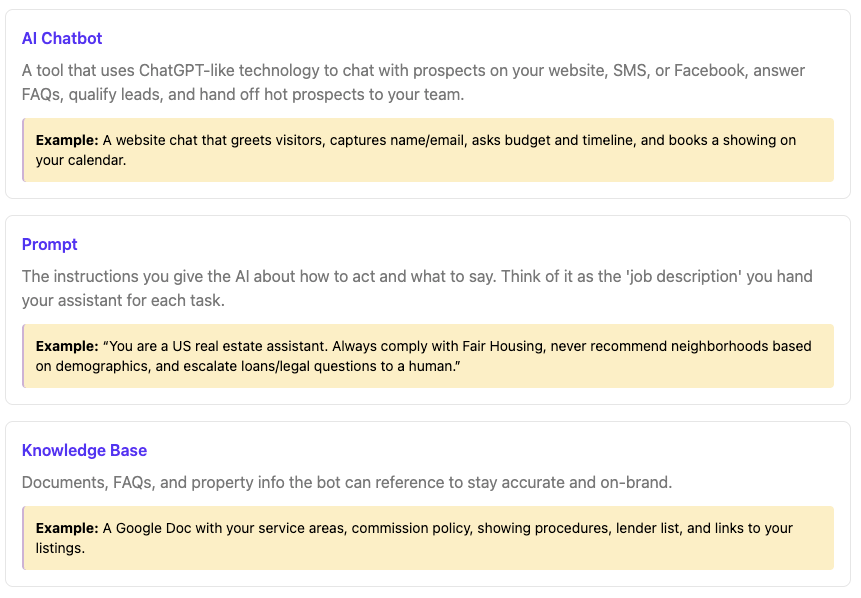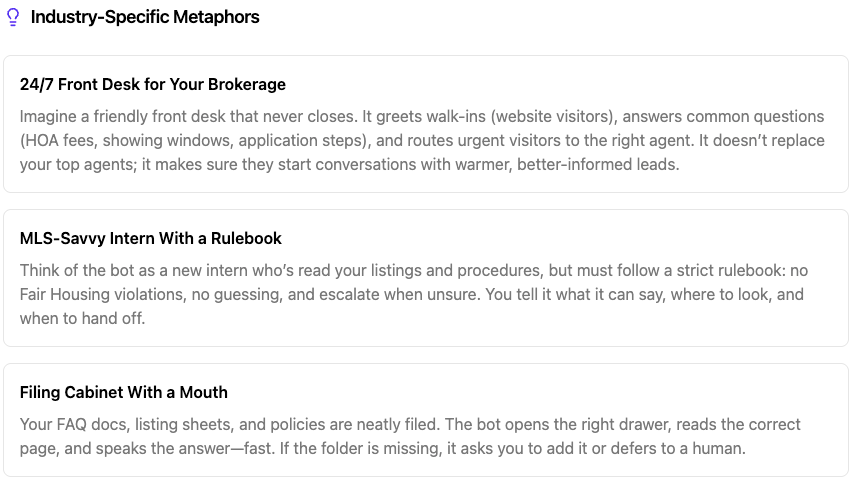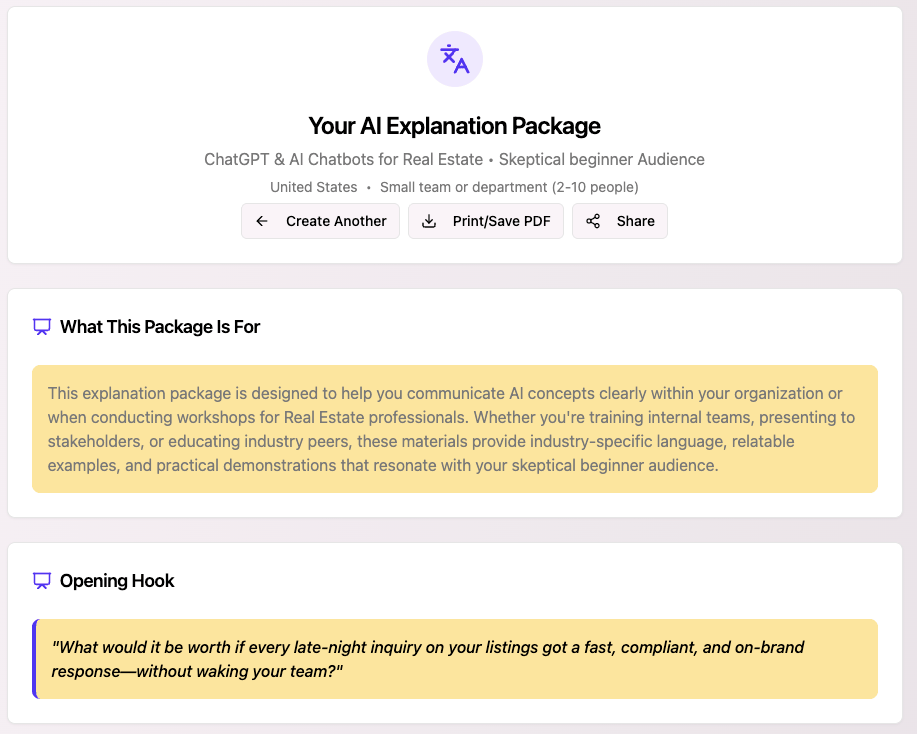- AI with Kyle
- Posts
- Saturday Sessions: How To Make $2,000 An Hour With AI Without Coding
Saturday Sessions: How To Make $2,000 An Hour With AI Without Coding
Communication gap
Happy Saturday!
After a recent successful AI workshop for a marketing team I went up to the people who hired me and asked a simple question.
"Why did you hire me? You've got an entire IT department. You've got AI developers. Why pay someone £2,000 when **** from IT could have done this?"
She laughed.
"**** DID do this. Six weeks ago. Two hours of explaining the intricacies of AI. API documentation and token limits. The team left more confused than when they started.
"**** made us feel stupid. You made us feel capable. We work at the same company, sit in the same meetings, but when **** talks AI, it's like he's speaking another language."
They weren't paying me for AI knowledge. Their IT team had plenty of that. They were paying me to translate. Between the builders and the users. Between technical reality and business needs.
Being able to explain technical concepts like AI is incredibly important. And lucrative. And I’ve written you a whole guide on how to get good at it.
Oh…and shot a tutorial video…
And made you an AI tool!
Video version
I’ve shot a long form tutorial for you on this topic.
You can find it here:
This is my first long form tutorial so please (if you like it!) drop me a follow and like the video. And ideally add a comment if you can. It really helps the algorithm.
If this sort of longer video guide is popular I’ll keep making them. So your support helps point me in the right direction here. Thanks!
The Overlap Advantage (Why You're Sitting on a Goldmine)
Consultants charge thousands per hour to help businesses work out AI. And the annoying thing is they're not actually smarter than you. They're not necessarily more technical. They've just positioned themselves as translators.
I studied history at university. Essays about dead kings and ancient battles. But I now charge £2,000+ per hour teaching artificial intelligence.
Why? Because I don't teach the technology. I teach translation.
Picture a Venn diagram - two overlapping circles. The left circle is your industry knowledge. The right circle is AI knowledge. That overlap in the middle? That's where the money lies. That is where you operate.

Three Areas
There are three areas in the diagram above.
Area 1: Your Industry Knowledge (Your Unfair Advantage) You already have this. You know the actual problems that people in your industry face day to day. The language they use - not tech speak. What solutions actually need to look like. The politics, the resistance points, the fears.
Y Combinator actually tells their founders to go undercover - literally get a job in the industry they're trying to disrupt. But you? You're already there. You're already “undercover”. You have the knowledge of what needs to be helped with artificial intelligence in your industry. This stuff is GOLD.
Area 2: AI Literacy (You're Already Ahead) Here's what most people don't realise. If you're watching my videos, if you're reading this newsletter, if you're actively engaging with AI technology - you're already ahead of 99% of people out there.
You may not realise it. But that’s because you’re in a bubble surrounded by people who follow this stuff. That is rare.
You're not just hearing about AI. You're actively learning. You're using it. You're experimenting with it. You're seeing what works and what doesn't. With just a bit of focused effort, you can be ahead of absolutely everybody in your industry.
Area 3: The Bridge (Where the Magic Happens) This is where you become really powerful. Again, it's not about being technical - it's about becoming a bridge, an interpreter between these two worlds, the two other spheres. You translate AI concepts into your industry's language. (By the way I’ve built you a tool to help with this! AI Industry Translator) You help explain to people why they need to pay attention to AI in a non-technical way. You help the lay people understand.
The Communication Gap (How to Actually Bridge It)
There's a massive communication gap between people who understand AI and people who need to understand AI. Most AI experts live entirely in the technical world, and most people in your industry live entirely in their world. These two groups? They're speaking different languages.
That gap - that's your opportunity. And we use communication to bridge it. This isn’t rocket science but most people miss it entirely.
A technical expert walks into a marketing agency and says: "We'll implement a fine-tuned large language model with custom prompting architecture to generate copy variations using transformer-based neural networks and API integrations."
Lost yet? Yeah, and so will the agency owners. These are marketing people, they don't know what any of those words mean. What does all that stuff mean for their business? Cost savings? Less frustrating work? Higher revenue? Who knows.
So instead we go in and we translate it: "Hey, remember that killer Facebook ad from last month? Yeah? Cool. Feed that into AI and tell it to make 20 different variations all in different angles. Edit the best five or so, and then we can put them up for testing. We'll be done in 30 minutes instead of eight hours."
Do you see the difference? There's no mention of GPT. No API talk. We're not talking about tokens or parameters. Just clear, practical value. And these are the steps that we're going to take.
That is translation. And that is worth £2,000 per hour, easily.
Building Your Translation Library
For each of the key concepts inside artificial intelligence, we want to come up with a metaphor that makes sense within your industry.
I’ve actually built you a free AI explanation tool for this first step.
For example here’s what the tool creates for real estate, in the US, aimed at a sophistication audience:

Just three examples here. The tools creates a LOT more
As well as key concepts the tool will create metaphors and similes to help you communicate the concepts.

We need these similar kinds of metaphors and similes for our particular industry so that we can make people go "Ooh, now I get it. That makes sense!”
The Power of Demonstration
Next up, when you're communicating the importance of AI, make sure that you demonstrate. I've given workshops everywhere across the world in many different industries - from pro bono sessions at small charities here in London to multi-billion pound companies around the world.
The most important thing I can tell you is that you cannot just talk at people and expect them to understand how AI works. My workshops are 50% lecture, 50% hands-on. Often more than that with more exercising than talking.
Using AI is a skill. It’s not knowledge based!
We need to get people using AI as much as possible so that they can learn its limitations, what it's good at, what it's not good at. And how best to know the difference.
So generally you want to go in with one killer example. An example that you can run them through that is very specific to their industry and the problems that they have. Having one specific example is much more important than having 10 generic examples.
Using your knowledge of the industry itself, come up with a problem that you know AI can solve and walk them through step by step. Have them do it themselves on ChatGPT. Show them one transformation, not ten. Don't just give them a menu of different options - have them implement one right in front of you so that they get it.
Ideally connect this example to money or time immediately so that the business people in the room very quickly understand the importance of this.
Your Quick-Start Tool (Because Knowing and Doing Are Different)
Okay, now you understand the concept. Hopefully you see the opportunity. But knowing and doing are two very different things. Most people will read this, nod along, and do absolutely nothing because they don't really know where to start.
So that's why I've built you something to help you take that first step. It's not magic. It's just a tool that's going to help you create your first industry-specific AI explanations.
The Industry AI Translator Tool You're gonna tell it your industry, and it's gonna give you metaphors, stories and explanations that actually work. Think of this as training wheels to become a translator.
The tool will generate a full report for you, tailored to the exact industry and audience you want to talk to:

Obviously you could do this without the tool. You could sit down, think about your industry problems, learn some basic AI concepts, and start making connections. This tool is just gonna make it a lot faster for you. It's gonna get you unstuck, give you templates to adapt and get you moving in the right direction.
It's also free to use: https://aiwithkyle.com/tools/industry-ai-translator
The Zero to £2,000 Per Hour Roadmap
I’m not just going to give you the tool, a pat on the back and a “good luck!”.
Nah! Let’s talk next steps.
How do we go from zero right now to making over £2,000 per hour as an AI expert? You understand the opportunity, you can see the gap, but how do you actually become a translator? How do you fit into this area?
Here's the progression I would follow right now:
Step 1: Build Your Translation Library (The Groundwork)
You're going to first build your translation library. Lay the groundwork right now - this is essential. Start with something like five concepts: ChatGPT, automation, large language models, agents, data for example. Create three explanations for each of them using your industry's language.
Build a go-to metaphor bank full of stories. A library of information that when asked, you're able to just rattle it off the top of your head. Use the tool I've built to get a head start - input your industry and get a starter library, then build from there.
Step 2: Practice Explaining (Even to Nobody!)
Start to practice explaining as soon as possible, even if you don't have anyone to explain to. But ideally do it somewhere where people can see as it makes the exercise more “real”.
Shoot 30-second videos daily and post them somewhere like TikTok, Instagram or YouTube Shorts. Consider filming an AI 101 for your particular industry: “What is an LLM - for educators”. Even if three or four people watch, it doesn't matter because publishing sharpens the edge. It forces you to explain clearly knowing someone could be watching!
If you find this weird, have somebody off camera ask you questions and then just record the answers as if you were talking to them. The whole point about recording yourself is it forces you to be tight, clean, and clear, and allows you to have micro practice every single day explaining AI concepts to people in your industry.
Step 3: Secure Internal Practice
If you have a job, then this is gonna be easy. Offer to provide an AI workshop to other colleagues.
Funnily enough, if you're employed, this will actually help secure your position against artificial intelligence. If you are the AI person at work that’s strong position to be in right now.
Start with a simple 15-minute training to staff to get everybody on board and using artificial intelligence safely. Keep it informal. Give them one practical AI use. Don't overstuff your workshop, but instead position yourself as a forward thinker - the go-to within your company who can help with AI.
Step 4: Pro Bono Practice (Without Financial Pressure)
Another way to practice without putting financial performance pressure on yourself - find a charity or nonprofit in your industry (or not, doesn't really matter) and offer a free one-hour workshop. They win because they get free training. You win because you get practice.
Also make sure to get a testimonial and photos of yourself giving the workshop. This is all really important social proof moving forward.
By providing a free workshop to a charity or nonprofit, you're able to practice giving workshops, build up your confidence in your own abilities without the unnecessary worry of having to charge them and therefore increased performance anxiety.
Importantly you're also not devaluing your time, which is really important when you do start to charge for this kind of education. And charities and nonprofits desperately need this as much as for-profit businesses.
Step 5: Start to Monetise Your Skills
What you have started to do is incredibly valuable. Everyone needs it.
Chambers of Commerce need speakers. Trade associations want AI training. Industry conferences will pay a huge amount of money to get you up on stage. And companies are desperate for these translators to help explain to their staff why they need to be using artificial intelligence.
At this point, you can start doing outreach, talking to people in your industry about the service that you are now offering. I'd recommend starting at relatively low prices for training and workshops and then raising your prices as you're building confidence and industry reputation. Maybe £500 for half a day to start.
Step 6: Expand From There
Once you've started to educate companies and get paid well, you can expand out from there.
You can add on a consulting offer where you're given several thousand pounds a month retainer to act as an advisor. You can take on board positions for strategic guidance. You can set yourself up for implementation work, or work with an implementation partner charging tens of thousands or hundreds of thousands of pounds to get systems built. You can even start to build your own products - micro SaaS to help your industry needs. And you can create courses that you sell and embed into industries.
All of this, however, starts with translation.
Remember that we are the bridge between these two worlds: AI and your current industry. If you master explaining and allow translation between these two areas, money will follow, don’t worry.
What's Actually Happening Out There
More likely than not, your industry is waiting for somebody to step up and help with this stuff.
The IT guy I mentioned at the top? He made them feel stupid. I made them feel capable. You’re going to go do the same. That's the power of sitting in the overlap.
First step go and use the tool https://aiwithkyle.com/tools/industry-ai-translator!
Keep Prompting,
Kyle
AI with Kyle - Tools, Resources and Products: Daily Show | Build an AI Business Challenge | AI Playbooks | 10 Week AI Summer Camp | BATON AI Business Series | AI App Building | AI Trainer Business Planner | What AI Business Should You Start? | AI Authority Accelerator | AI Automation Accelerator | 🏁 AI Workshop Kit
